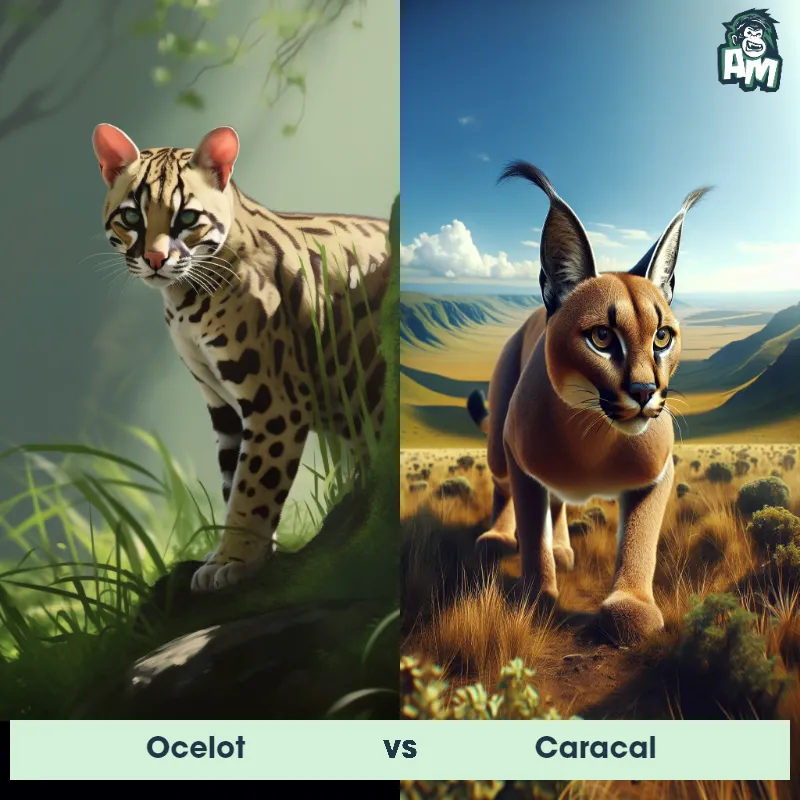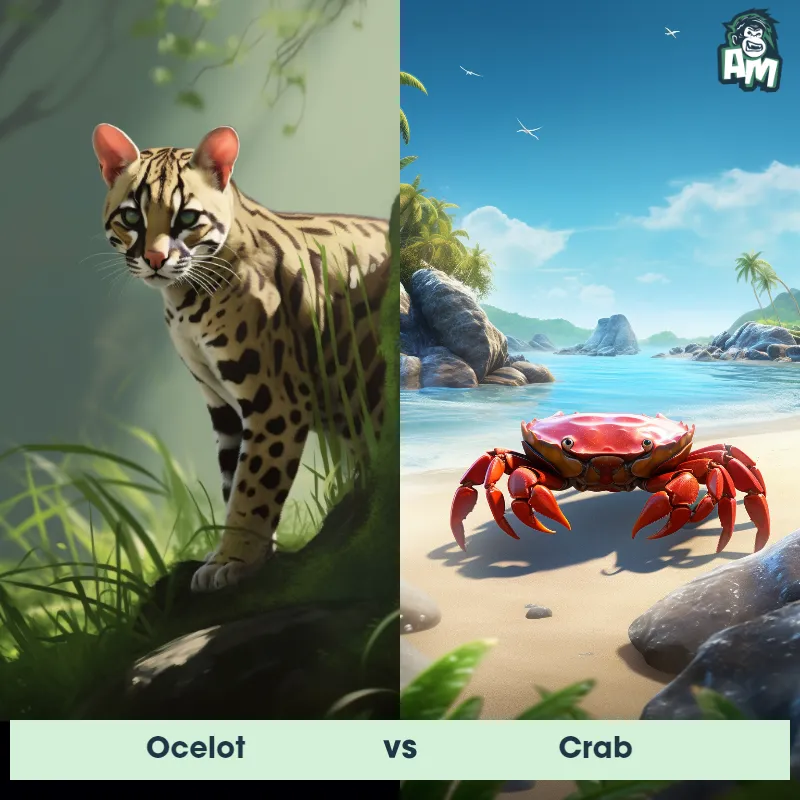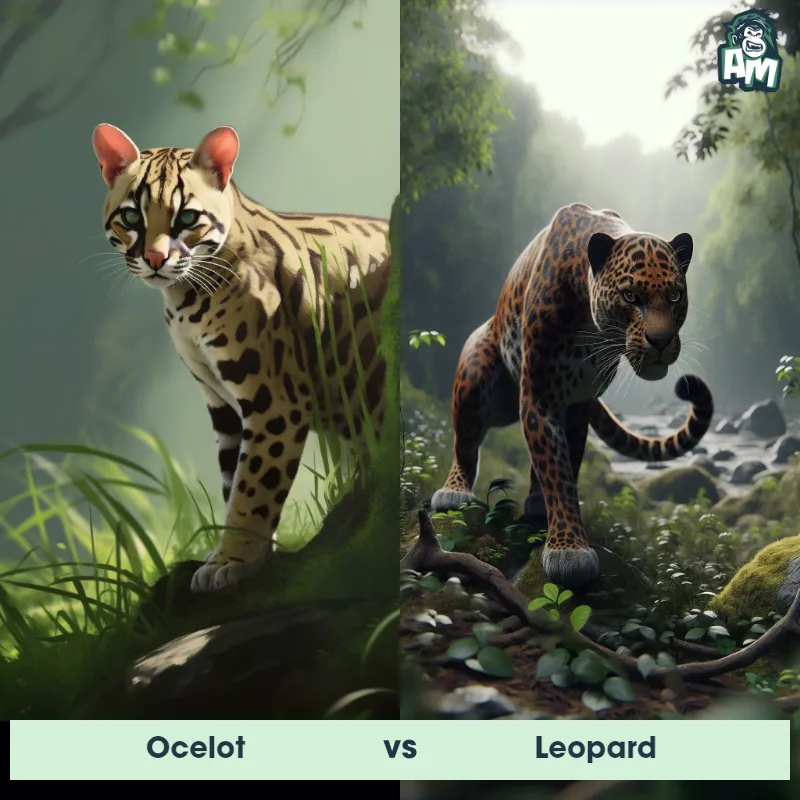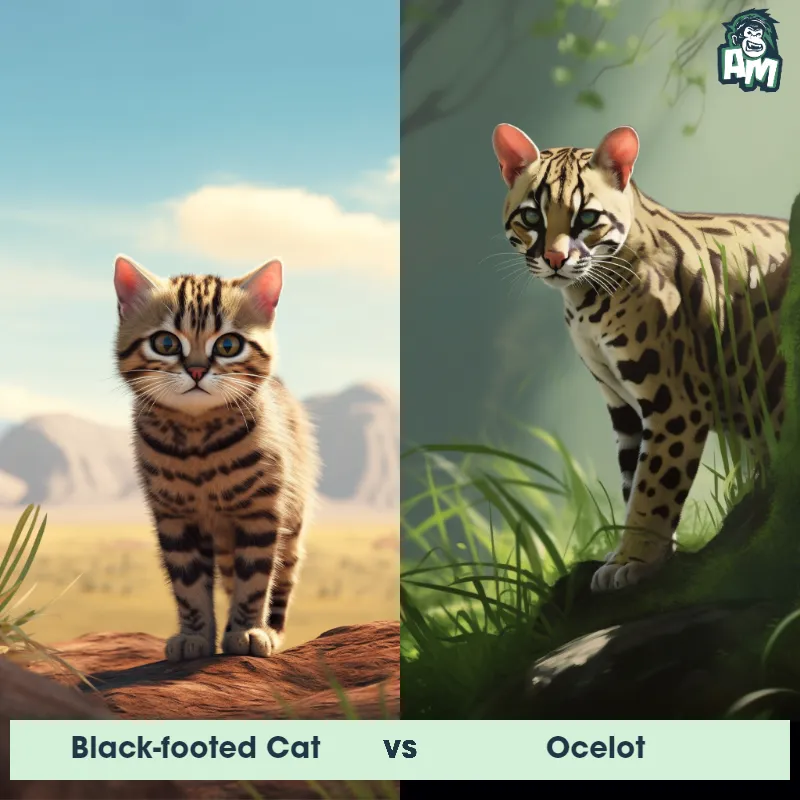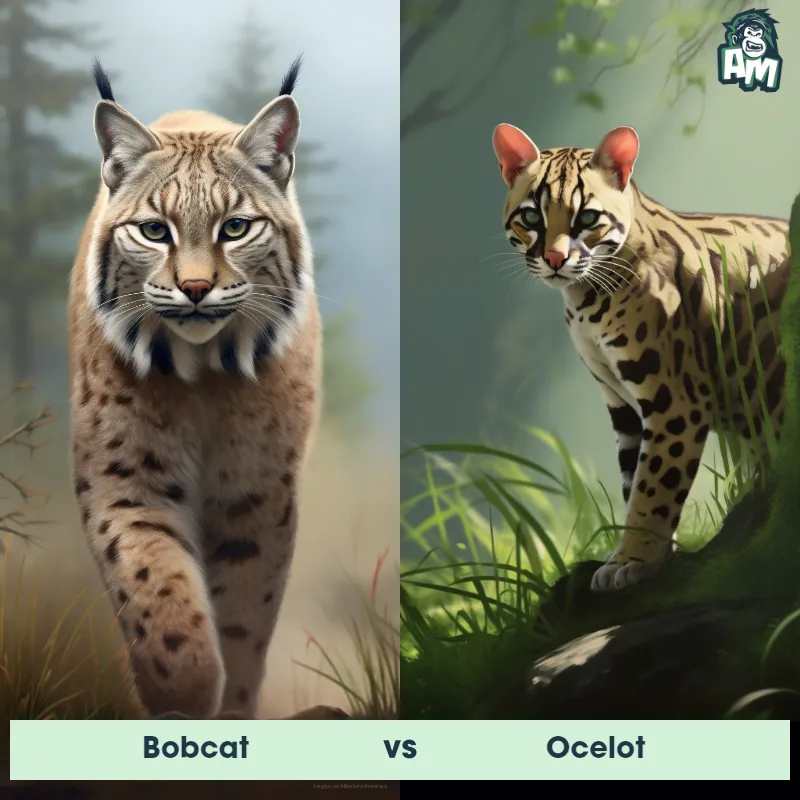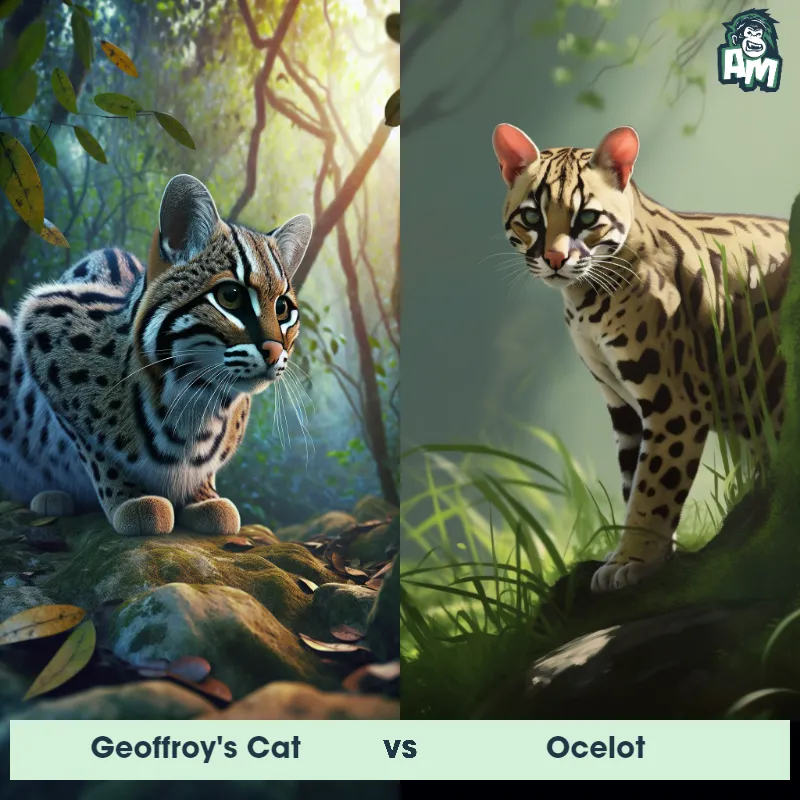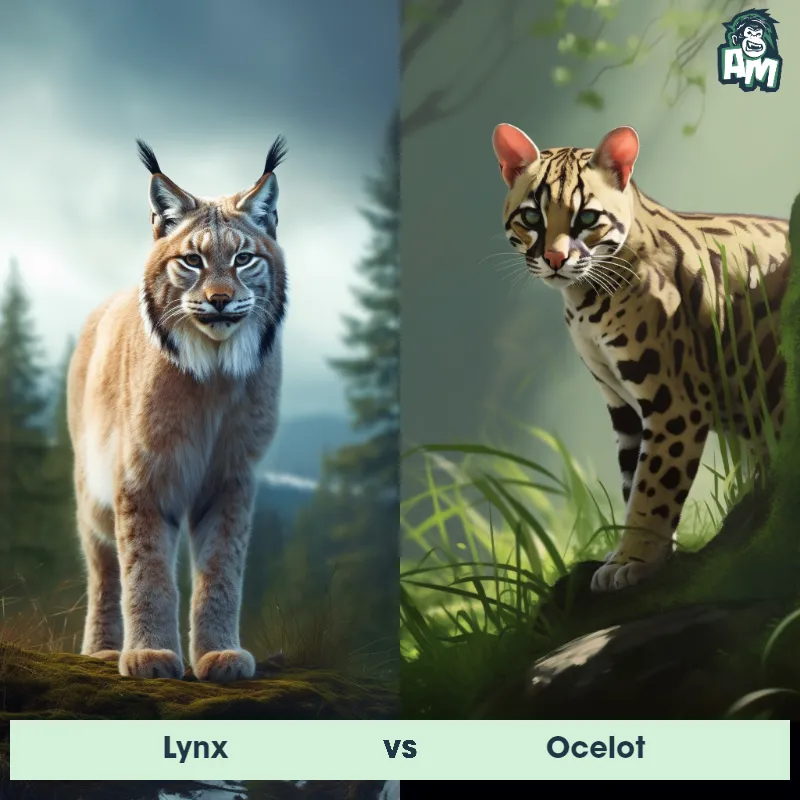The Ocelot
The Ocelot is a medium-sized wild cat that can be found in various habitats throughout Central and South America. It has a distinctive appearance with a compact yet muscular body, short legs, and a long tail.
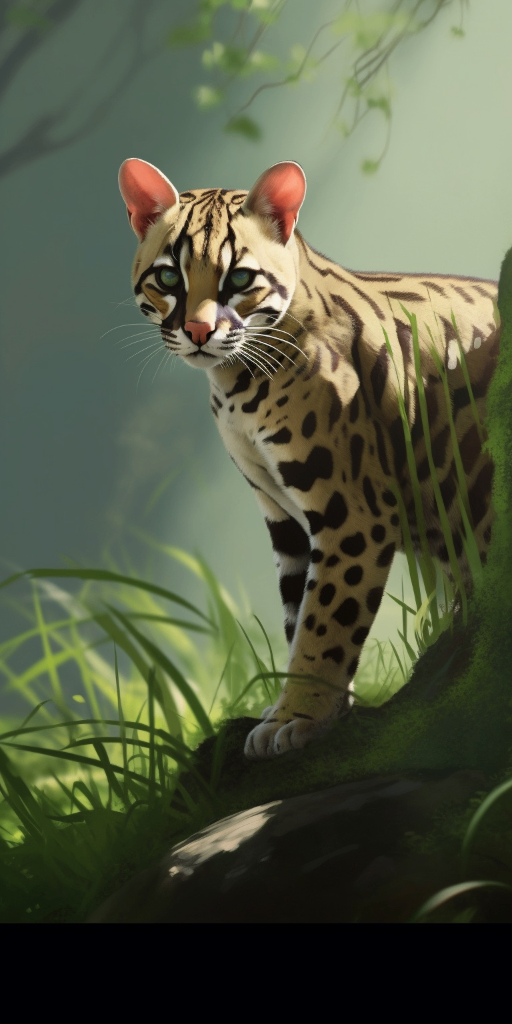
| Ocelot | |
|---|---|
| Size | 2-3 feet (0.6-0.9 meters) in length |
| Weight | 20-35 pounds (9-16 kilograms) |
| Speed | Speed: 50 mph (80.47 km/hr) |
| Key Strength | Agility and sharp claws |
| Biggest Weakness | Lack of size and strength compared to larger predators |
| Scientific Name | Leopardus pardalis |
| Family | Felidae |
| Habitat | Forests, grasslands, and swamps |
| Geography | South and Central America |
| Diet | Small mammals, birds, reptiles, and fish |
| Lifespan | 10 years - 13 years |

The Ocelot
The Ocelot is a medium-sized wild cat that can be found in various habitats throughout Central and South America. It has a distinctive appearance with a compact yet muscular body, short legs, and a long tail.
Fun Fact: The Ocelot is known for its exceptional climbing abilities, being able to effortlessly navigate through trees and spend a significant amount of time resting on branches.
| Ocelot | |
|---|---|
| Size | 2-3 feet (0.6-0.9 meters) in length |
| Weight | 20-35 pounds (9-16 kilograms) |
| Speed | Speed: 50 mph (80.47 km/hr) |
| Key Strength | Agility and sharp claws |
| Biggest Weakness | Lack of size and strength compared to larger predators |
| Scientific Name | Leopardus pardalis |
| Family | Felidae |
| Habitat | Forests, grasslands, and swamps |
| Geography | South and Central America |
| Diet | Small mammals, birds, reptiles, and fish |
| Lifespan | 10 years - 13 years |
Ocelot Matchups
We use AI to simulate matchups between the Ocelot and other animals. Our simulation considers size, strength, and natural predatory behaviors to determine the most likely outcome.
Ocelot: Diet, Predators, Aggression, and Defensive Behaviors
What do Ocelots eat?
Ocelots are carnivores and primarily feed on small mammals such as rodents, rabbits, and birds. They may also prey on reptiles, fish, and insects when other sources of food are scarce. Ocelots are skilled hunters and often rely on their keen senses of sight and hearing to track down their prey.
Do Ocelots have any predators?
While adult Ocelots do not have many natural predators due to their agility and hunting skills, they can still fall victim to larger predators such as jaguars, pumas, and harpy eagles. Young Ocelots are more vulnerable to predation and may be targeted by larger carnivores in the wild.
Are Ocelots aggressive?
Ocelots are typically solitary animals and not known for being aggressive towards humans. However, they may display aggressive behavior when threatened or cornered. Ocelots are skilled predators and will defend themselves if they feel threatened or are protecting their territory.
Do Ocelots fight?
Ocelots are solitary animals and tend to avoid confrontation with other species. However, they may engage in fights with rival Ocelots over territory or mating rights. These fights are usually brief and involve displays of aggression rather than prolonged physical combat.
How do Ocelots defend themselves?
Ocelots use a variety of tactics to defend themselves from potential threats. They rely on their speed and agility to escape danger, while also using their sharp claws and teeth to fend off attackers. Ocelots may also employ camouflage and stealth to evade predators and remain hidden in their natural habitat.
What is the Ocelot's biggest weakness in a fight?
One of the biggest weaknesses of an Ocelot in a fight is their relatively small size compared to larger predators such as jaguars or pumas. While Ocelots are agile and skilled hunters, they may struggle to defend themselves against larger, more powerful adversaries. In such situations, Ocelots may rely on their speed and stealth to avoid direct conflict and escape from danger.
Fun Fact: Ocelots have a unique characteristic called "ocelli" on the back of their ears, which are circular markings that resemble eyes. These markings may suggest a larger size to potential predators or prey, acting as a form of camouflage or intimidation.
Fun Fact: Ocelots have a specialized adaptation for hunting prey - they have a highly developed sense of hearing. Their ears are designed to be incredibly sensitive, capable of detecting the slight rustling sounds made by possible prey, even in dense vegetation.



